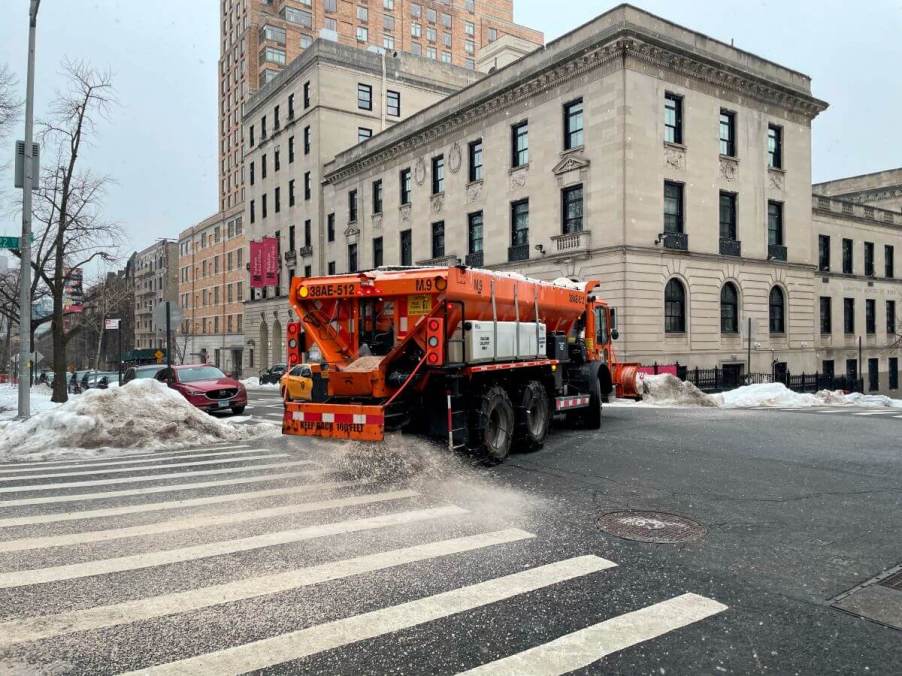
How to Protect Your Car From Road Salt Damage During Winter
With winter approaching, it’s time to think about the effects of road salt on car safety and maintenance. Applying salt to roadways reduces the risk of accidents while driving during and after winter weather events. That’s the good news; the bad news is it’s hard on your car’s paint and unprotected undercarriage. However, some simple preventive steps can decrease or eliminate salt’s adverse effects.
How does road salt damage a car’s paint and other auto parts?
How Stuff Works says road salt is similar to table salt except that it is unpurified. The impurities in road salt include lead, aluminum, phosphorus, and iron. We’ll return to these later, but the iron adversely affects a car’s paint job.
Bridgestone explains the science behind road salt’s acceleration of rust formation. Simply put, precipitation, such as rain, sleet, and snow, combines with the salt’s free-floating ions and the iron in the unpurified salt to form iron oxide. Iron oxide, abrasive grit, and other minerals in road salt can damage your car’s paint. It also accelerates the corrosion process of any unprotected areas underneath your vehicle.
How can I avoid problems and repairs caused by road salt?
Car Covers suggests washing your car, at most, 10 days after driving in a winter weather event. However, it’s best to wait until temperatures climb above freezing to prevent ice build-up on internal door mechanisms and locks. Also, find a carwash that doesn’t use recycled water and spend some time on your car’s undercarriage, tires, and wheels.
Nationwide recommends waxing your car’s exterior painted surfaces before winter arrives. A quality automotive wax prevents road salt and grime from reaching the paint. Remember to rinse any painted surfaces well before scrubbing with brushes or hand-held cloths, and reapply wax as needed. AODetail also says to keep your car garaged for protection from airborne salt caused by others driving on nearby salted roadways.
As an added layer of protection from winter’s assault, Family Handyman recommends the application of a spray-on undercoating. Whether applied with a new vehicle purchase or by a reputable aftermarket shop, undercoating protects exposed sheet metal, fasteners, and other components from oxidation caused by contact with water and salt.
Another simple way to lessen your car’s exposure to road salt is by adjusting when and where you drive. If possible, refrain from driving before, during, or immediately after a winter storm. Street crews often treat roadways with a liquid brine solution before a predicted storm, so avoiding that and the salt placed on roads altogether is the best solution.
Also, avoid puddles and deep slush once the snow begins melting. These places are cesspools of salt, sand, and grime that splash onto painted surfaces and undercarriages. Finally, avoid deep snow before it’s packed down, as it could hide potential hazards worse than road salt.
Other than damaging my car, is road salt safe?
The short answer is no, road salt is not safe. Vox says road salt damages infrastructure such as bridges. Additionally, the salt, along with its impurities like lead, aluminum, and phosphorous, accumulates in rivers, lakes, and soils along roadways.
Often, this accumulation results in wildlife-vehicle collisions as animals seek out the salt to satisfy their needs. When larger animals, such as Moose, collide with cars, human fatalities often result as well. However, Vox cites a 1992 study showing that spreading salt on slick roadways could reduce car accidents by as much as 87%.
While other de-icing methods loom on the horizon, road salt is currently the only practical option for keeping roadways passible during winter storms. Keep an eye out for “smart” snow plows that only apply salt to road sections that need it. And maybe, one day, we’ll see solar-powered roadways that remain above freezing to prevent ice and snow accumulation.






